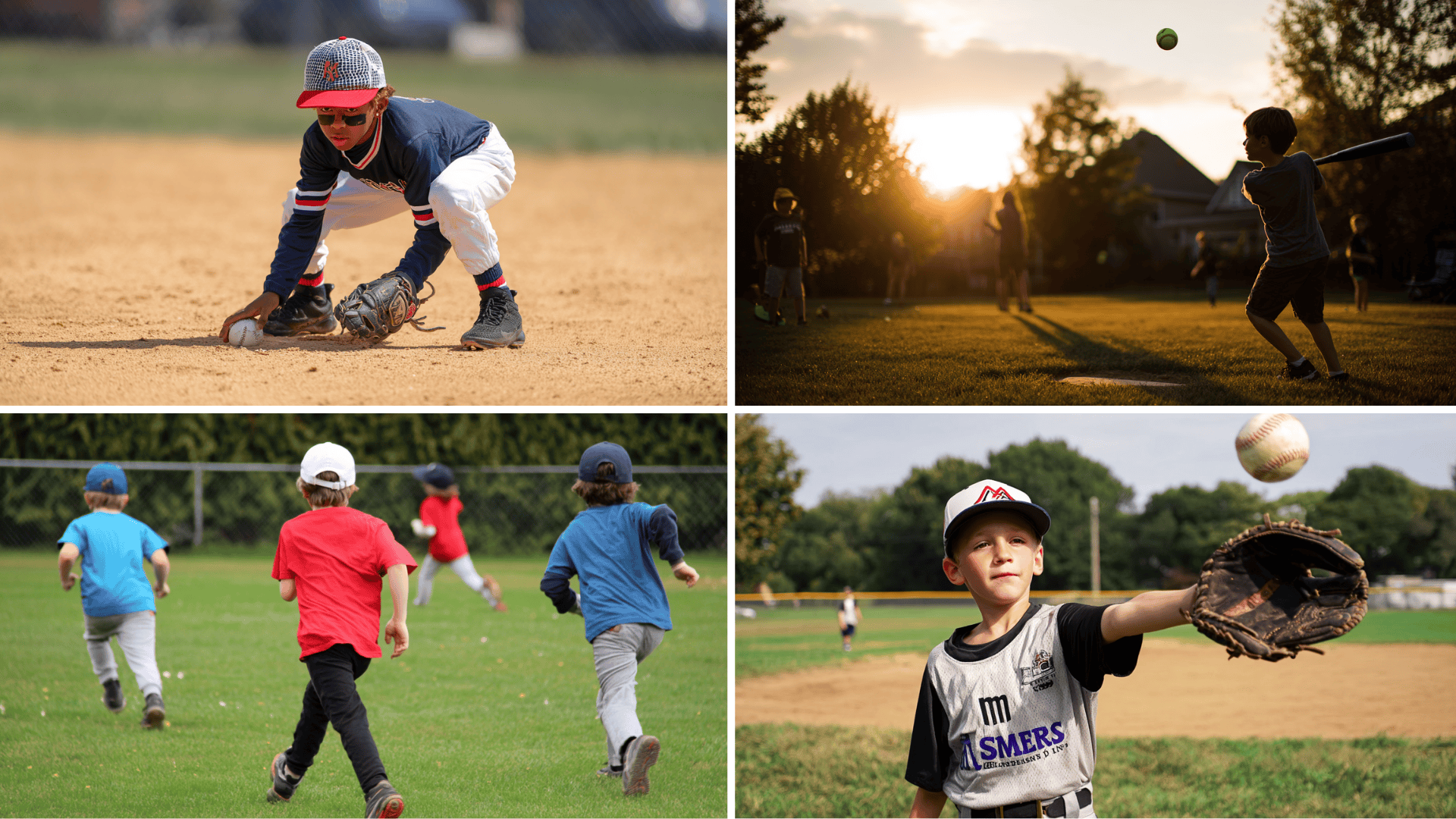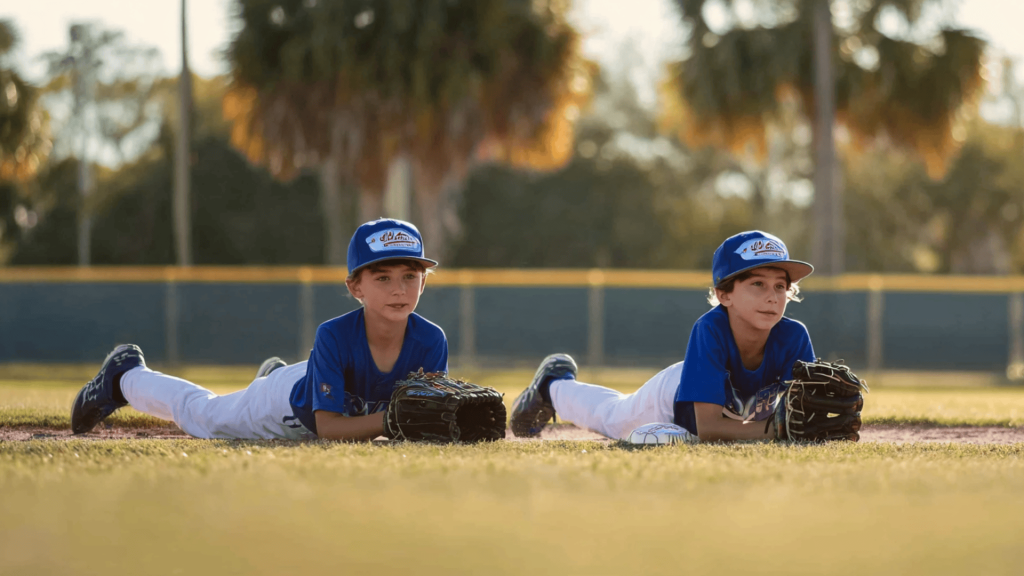Are you new to baseball and wondering how to build your skills step by step?
Many beginners struggle with throwing accurately, hitting the ball cleanly, and catching fly balls with confidence. These challenges are totally normal!
Every great baseball player started exactly where you are now. The good news is that with the right practice drills, you can improve quickly and have fun while doing it.
Simple, easy-to-follow drills will help you master the basics of throwing, batting, catching, and running bases. Let’s explore some beginner-friendly exercises that will help boost your confidence and improve your game.
Why Baseball Drills Matter for Beginners
Baseball drills are like building blocks for your skills. They help you practice the same movements over and over until they become automatic.
This builds muscle memory, which means your body will remember what to do even under pressure during a game.
Drills also improve your hand-eye coordination and boost your confidence. When you practice catching ground balls repeatedly, you’ll feel more ready when one comes your way in a real game.
Regular practice fosters good habits early, enabling you to become a stronger player more quickly.
Essential Warm-Ups Before Drills
Warming up before practice helps you stay safe and play better. Cold muscles can be easily injured, so it’s best to start slowly.
- Light jogging around the field for 2-3 minutes to get blood flowing
- Arm circles forward and backward to loosen up your shoulders
- Leg swings side to side and front to back for flexibility
- Gentle stretching of your arms, legs, and back muscles
- Easy throwing, starting close, and gradually moving farther apart
These simple warm-ups prepare your body for more intense drills and reduce the risk of injury.
Best Baseball Drills for Beginners

Here are the most important drills every beginner should practice. Start with these basics and watch your skills grow!
1. Throwing & Catching Drills
Playing catch is the most important drill for beginners. Stand about 20 feet apart from a partner and throw the ball back and forth.
Focus on moving toward your target and following through with your arm. Practice catching with two hands, throwing against a wall if alone to improve accuracy and glove positioning.
Pro tip: Keep your eye on the ball from the moment it leaves your partner’s hand until it hits your glove.
2. Hitting Drills
Tee work is perfect for learning proper swing mechanics. Place a baseball on a tee and practice hitting it into a net or fence. Focus on keeping your head still and swinging level through the ball.
Soft toss is another great drill where a partner gently tosses balls for you to hit. This helps with timing and hand-eye coordination. Start with slow tosses and gradually increase the speed as you improve.
Pro tip: Keep your eye on the ball and try to hit the back half of it for better contact.
3. Fielding Drills
Ground ball practice teaches you how to field balls hit on the ground. Get in a ready position with your glove down and feet moving.
Use both hands to catch the ball whenever possible; this is called the “two-hand funnel.” Practice fielding directly hit balls first, then balls to your left and right. The glove flip drill helps you transition quickly from catching to throwing.
Pro tip: Stay low and keep your glove on the ground – it’s easier to bring it up than down.
4. Fly Ball & Catching Drills
Start with short pop-ups that don’t go very high. Have a partner toss balls gently in the air for you to catch. Focus on getting under the ball and using two hands.
As you get better, try catching higher fly balls. Remember to call out “I got it!” so teammates know you’ve made the catch. Practice tracking the ball with your eyes from the moment it’s hit.
Pro tip: Position yourself so the ball comes down right in front of your glove, not directly overhead.
5. Base Running Drills
Practice explosive starts by sprinting to first base as fast as possible. Work on your first three steps – they’re the most important for beating out ground balls.
Practice rounding bases with correct footwork, touching the inside corner. Stop-and-go drills improve reaction to signals. Always run through first base unless going for extra bases.
Pro tip: Pump your arms and lean forward slightly when running to first base for maximum speed.
6. Balance and Swing Path Drill
Place a bat or stick on the ground in a straight line. Stand with your feet parallel to it, then practice swinging while keeping your body balanced and your head steady.
This drill teaches proper balance, weight transfer, and a consistent swing path. Focus on staying centered over the line as you swing. Start with slow swings and gradually increase the speed as you become more comfortable.
Pro tip: Keep your weight evenly distributed on both feet throughout the entire swing motion.
7. Glove Toss Drill
Without a ball, toss your glove slightly in the air and catch it repeatedly using proper hand positioning. This builds glove-hand coordination, quick reflexes, and comfort with glove use before adding a ball.
Practice catching the glove with the same hand motion you’d use for a real ball. This helps you become familiar with the weight and feel of your glove.
Pro tip: Focus on smooth, controlled tosses – don’t throw your glove too high or too hard.
8. Two-Ball Juggle Drill
Toss two tennis balls lightly in the air and try to juggle them back and forth. This improves hand-eye coordination, timing, and reaction speed – all essential for hitting and fielding.
Start by tossing one ball from hand to hand, then add the second ball. Don’t worry if you drop them at first; everyone does! Keep practicing and you’ll improve quickly.
Pro tip: Start with just one ball until you can toss it perfectly from hand to hand ten times in a row.
9. Relay Throw Drill
Set up players in a line about 30 feet apart. The first player throws to the second, then the second throws to the third, and so on. Rotate positions so everyone gets practice at different spots.
This develops accuracy, quick transitions, and communication – great for team practice. Focus on making quick, accurate throws and clear catches.
Pro tip: Call out your teammate’s name before throwing to get their attention and improve communication.
10. Target Practice Drill
Place a bucket, net, or cone at a set distance and practice throwing the ball at the target until you can hit it consistently.
This builds throwing accuracy and control in a fun, game-like way. Start close to the target and move back as you improve. Keep track of how many throws it takes to hit the target five times in a row.
Pro tip: Aim for the center of your target and focus on smooth, repeatable throwing motion rather than throwing hard.
11. Reaction & Fun Game-Like Drills
Quick reaction drills keep you alert and ready. Have a coach give hand signals for different actions, such as “go,” “stop,” or “slide.”
Small field mini-games make practice fun while teaching teamwork. Try games like pickle (rundown) or mini scrimmages with modified rules. These drills improve your reflexes and help you think faster during real games.
Pro tip: Stay on the balls of your feet and keep your head up to react quickly to any situation.
Quick Reference Table: Drills & Skills
This handy table shows which drills are most effective for which skills. Use it to plan your practice sessions and focus on areas you want to improve.
| Drill | Skill Focus | Best For | Time Needed |
|---|---|---|---|
| Playing Catch | Throwing accuracy | All players | 10-15 minutes |
| Tee Work | Swing mechanics | Batters | 15-20 minutes |
| Ground Balls | Fielding | Infielders | 10-15 minutes |
| Fly Balls | Tracking catches | Outfielders | 10-15 minutes |
| Base Running | Speed & awareness | All positions | 5-10 minutes |
| Balance Swing | Swing balance | Batters | 5-10 minutes |
| Glove Toss | Hand coordination | All players | 5 minutes |
| Two-Ball Juggle | Hand-eye coordination | All players | 5-10 minutes |
| Relay Throws | Team communication | All players | 10-15 minutes |
| Target Practice | Throwing accuracy | All players | 10-15 minutes |
Use it to plan your practice sessions and focus on areas you want to improve.
Note: Mix different drills in each practice session to work on all your skills and keep things interesting.
Conclusion
Learning baseball takes time and practice, but these beginner drills will help you improve quickly.
Focus on throwing and catching first, then work on hitting and fielding. Remember that even professional players still practice these basic drills every day.
The key is to stay patient, keep practicing, and have fun while you learn.
Start with a few drills and master them before trying more. Consistent practice outweighs perfection. As confidence grows, add harder drills to challenge yourself.
Ready to start practicing? Pick two or three drills from this list and try them this week. Which drill do you think will help you most? Share your favorite beginner drill or ask questions in the comments below!





































